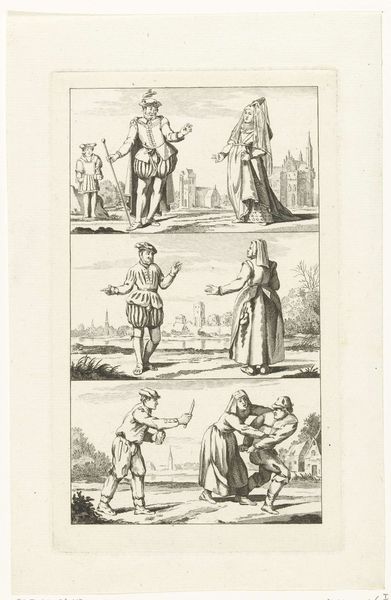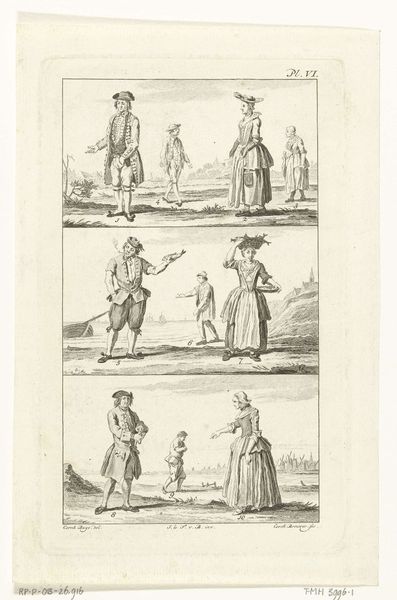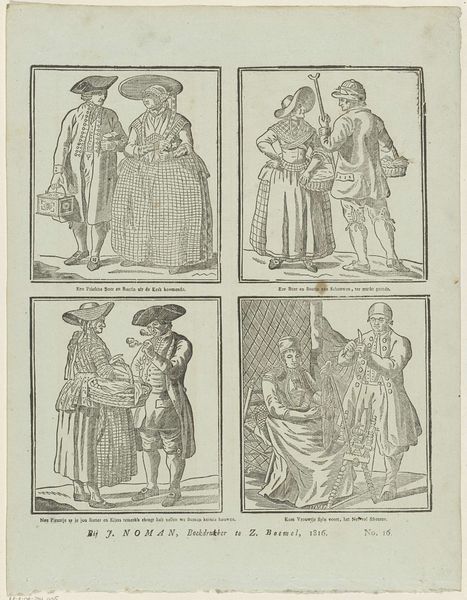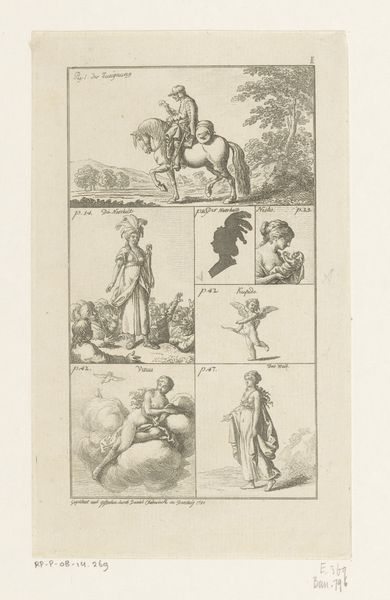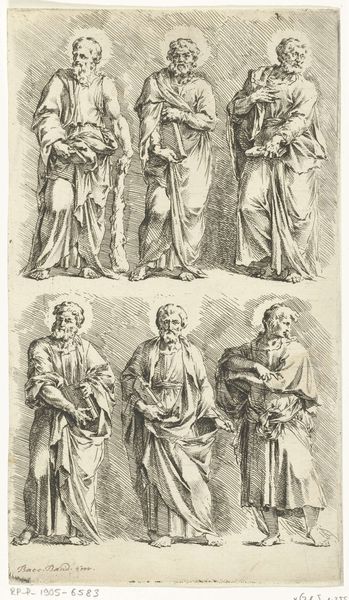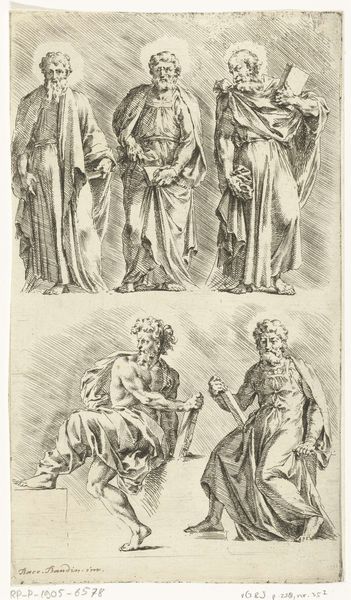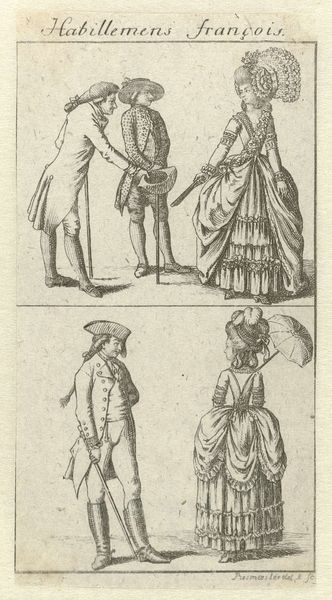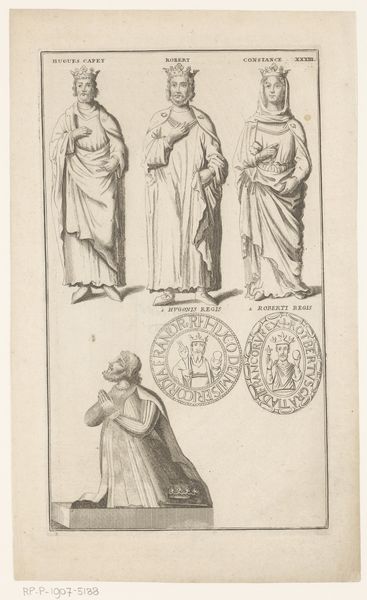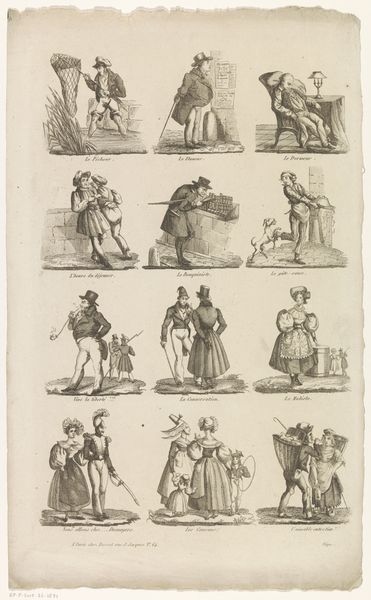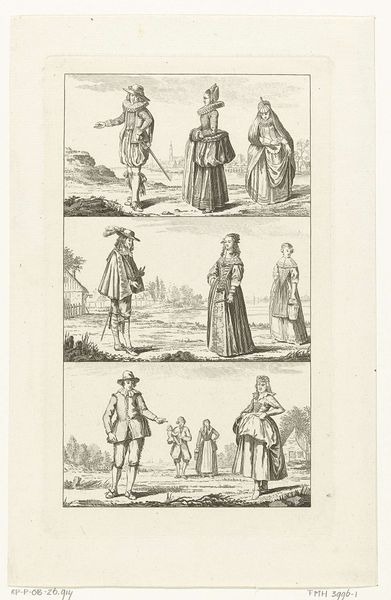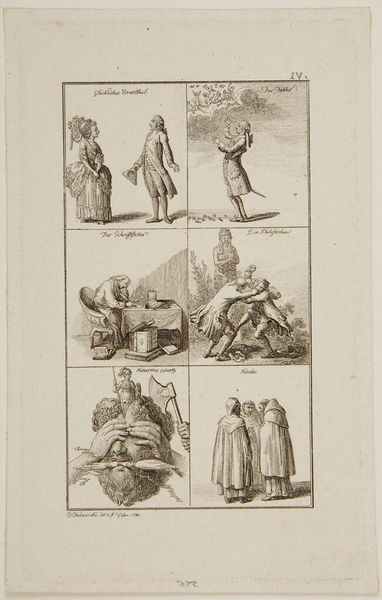
Acht figuren met Hollandse kleding uit de 17de en 18de eeuw 1769 - 1778
0:00
0:00
Dimensions: height 201 mm, width 117 mm
Copyright: Rijks Museum: Open Domain
Editor: This is "Acht figuren met Hollandse kleding uit de 17de en 18de eeuw" by Cornelis Brouwer, dating from 1769 to 1778. It’s a mixed-media print, depicting eight figures in historical Dutch attire. I'm struck by how each figure seems to occupy its own little stage. What catches your eye in this piece? Curator: What intrigues me is how Brouwer uses clothing as a carrier of cultural memory. Look at the evolution of silhouettes and ornamentation across just a century. Each garment speaks volumes about social status, moral values, and the changing aesthetics of the Dutch Golden Age and its aftermath. Editor: So, you see the clothing almost as symbols themselves? Curator: Precisely. Take the woman in the second panel, draped in voluminous fabric. Notice the headdress; what might that symbolize within the cultural context of the time? Editor: Maybe a sense of… grandeur? Almost theatrical. Is Brouwer perhaps commenting on the artifice of the upper class? Curator: It's plausible. The numbered sequence further suggests a didactic purpose— perhaps showcasing a timeline of fashion as a reflection of broader historical shifts. Consider how symbols morph and adapt to new contexts; fashion becomes a potent emblem. Editor: That makes a lot of sense. I hadn’t considered the symbolic weight clothing could carry like that. It's like a silent language spoken through the ages. Curator: Indeed. It reminds us that what we choose to wear isn't merely about personal taste but about participating in a collective narrative, a cultural echo of our past. It invites reflection on identity and societal structures, doesn't it? Editor: Absolutely. I'll definitely look at clothing in art with a different perspective now! Curator: Wonderful! I’m glad we’ve revealed some cultural continuity and the hidden psychology of it all today.
Comments
No comments
Be the first to comment and join the conversation on the ultimate creative platform.
